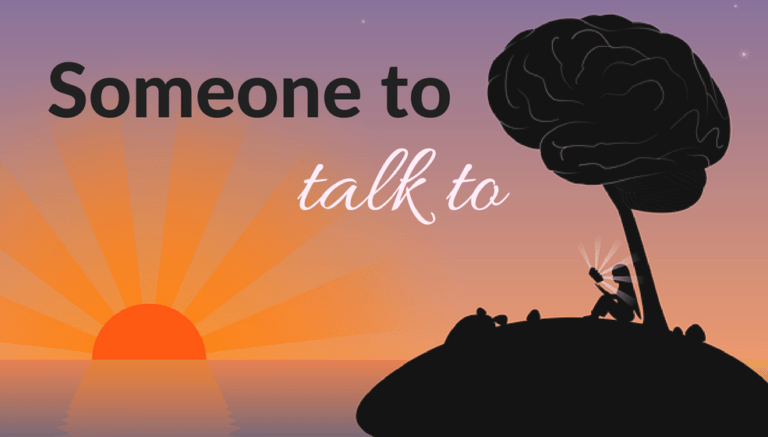Workplace and Repetitive Injuries

Are men and women who work in the heavy construction industry more at risk for work-related chronic pain? According to Paul Fontana, OTR, FAOTA, owner of the Center for Work Rehabilitation, Inc., in Lafayette, Louisiana, and Houston, the answer is yes—and no.
It’s a combination of work and life that puts a worker at risk for injury, says Fontana. And without proper ergonomics, body mechanics and conditioning, anyone—whether working on an oil rig or sitting at a laptop—can make themselves more susceptible to the types of injuries that lead to chronic pain. However, practices both on and off the job tend to put those in the heavy construction industry in a higher risk category.
Working Hard and Playing Hard
It’s often a lifetime of exertion that culminates in an injury, says Fontana. “Yes, people get injured on the job, but really it’s more that they’re getting hurt doing life—both from everyday stuff and the little injuries that add up along the way,” he says.
Fontana, who has worked with clients in the heavy construction industry and related industries for 40 years, says most people are more likely to follow safety rules at work than during their off time. “Your spine doesn’t say, ‘oh, you’re not lifting a box, you’re lifting your grandbabies; I won’t blow out.’ And your elbow doesn’t say, ‘oh, you’re not working gears, you’re painting your house; I won’t give you tendinitis.’ The rules of body mechanics don’t stop applying when you clock out from work.”
It doesn’t help that many in the heavy construction industry engage in off-time activities that are just as risky as their jobs. “These are often the kinds of guys who are climbing ladders to do home repairs or riding four-wheelers with their buddies when they’re home,” says Fontana. “Those are activities that can lead to injuries. Even spending a weekend hunting can put someone at risk for an injury. Pulling a deer out of the woods can put more compression on a disc than pulling a drill slip.”
Of course, those who perform manual labor and operate heavy machinery do experience physical stresses due to their jobs. Back injuries are especially common. Fontana explains that a person who’s standing up straight has 100 percent body-weight pressure on their spinal discs, but bending or slumping forward increases pressure on the discs by an additional 50 percent. Bending over while holding a weight increases pressure even weight, the greater the pressure.
With that being said, disc pressure is greatest while sitting. So while workers may be putting themselves at risk for a back injury by bending and lifting, they are also doing so by operating computers and machinery.
“Ultimately, whether these folks are sitting or standing, lifting pallets or maneuvering gears, a lack of ergonomics and good body mechanics is what puts them at risk,” says Fontana.
How to Prevent Injury
If you work in the heavy construction industry, you can reduce your risk of injury both on and off the job. First of all, follow any safety procedures—and use any safety equipment—offered where you work. You should also follow those rules when you’re not at work. “I always say, ‘if it’s good at work, it’s good at home,’” says Fontana.
The next important thing you should do is stretch. It sounds simple, but it can go a long way toward reducing risk of injury.
“I read a quote one time that said, ‘if stretching was ever a pill, it would be the most prescribed pill in the history of mankind,’” says Fontana. “Most people would never think of going for a jog but they’ll unload a pallet without ever considering it.”
Workers in heavy construction tend to experience a lot of soft-tissue injuries, such as muscle strains and pulls, and these are more likely to occur when the muscles are tight. Just 10 to 12 minutes of stretching the body—including the neck, shoulders, wrists, back and legs—making them more pliable and adaptive, and giving them the capacity to stretch farther before tearing.
If you’re looking for specific stretches and warm-ups for the tasks you most frequently perform, consult with a physical therapist or occupational therapist. In lieu of one of those professionals, a physical trainer may be able to show you some general techniques.
“Stretching can prevent many problems, but we don’t do it—or we don’t do it enough,” says Fontana.
Managing Pain when Injuries Occur
Prevention is always the best medicine, but sometimes injuries happen anyway. When a work-related injury leaves a worker with chronic pain, physical therapy, work conditioning and work hardening may help reduce pain and improve functionality—often allowing the person to return to work. Many people will seek these therapies in conjunction with medical pain management, with the goal of reducing or eliminating the need for long-term prescription drug use in many cases.
Fontana says it’s important both physically and psychologically for people to seek work conditioning and hardening as soon as they’re able to.
“From a psychosocial standpoint, when someone is injured or in chronic pain, they start to see themselves as a patient, and their friends and family start to treat them that way, too,” says Fontana. “The role of the patient starts to overshadow their roles as husband, lover, father, worker or mom. They can no longer do the things they used to do, and maybe they can no longer work either, so they become depressed. It’s essential for their mental well-being to get out of that state as soon as they can—if they’re able.”
Depression may take a particular toll on workers who don’t have transferable skills. If these people are able to improve, their mental attitudes will also improve, giving them hope of returning to work and other previous roles, says Fontana.
A delay in work training or a failure to move beyond basic physical therapy can take a physical toll as well. “We know that if a previously healthy and active individual becomes relatively inactive, they will lose 25 percent of their aerobic capacity within a week and 35 percent of their endurance within a month,” says Fontana. “Their flexibility is decreased and their activity tolerance is decreased.”
Being sedentary also exacerbates chronic pain, points out Fontana. “There’s a lot of research out there telling us that if you just sit down or stay in bed, in most cases your pain is going to get worse,” he says.
The Roles of Work Conditioning and Work Hardening
Work conditioning is a bridge from physical therapy to work hardening. It’s intended for people who have already undergone injury-specific treatments and therapies and now must begin the task of strengthening their bodies for work. Work hardening progresses from work conditioning. Once a worker has achieved maximum medical improvement of an injury, work hardening will improve his functional abilities in way that will allow him to return to competitive employment in a heavy work environment.
In his Center for Work Rehabilitation, Fontana uses real work activities in a 7,000-square-foot warehouse that simulates a real work environment. The facility includes a drilling floor with tongs, pipes and sledgehammers. The emphasis is on building strength for work through proper body mechanics.
According to Fontana, work conditioning typically involves four hours of therapy a day, five days a week, for four to six weeks. Work hardening, which simulates a full work day, is done for four to six weeks.
“Over that time period, they’re working hard at real work activities, so they’re not just lifting weights somewhere, they’re actually lifting, carrying, pushing and pulling,” he says.
It’s important to note that work conditioning and work hardening are not acute-care therapies. They occur post injury as a patient is working through recovery. Work conditioning and work hardening are not intended to replace pain management, but they often reduce a patient’s pain level or improve pain tolerance.
Fontana, who is a fellow of the American Occupational Therapy Association, is currently working on a paper that overviews the benefits of work conditioning for chronic pain patients.
“The ultimate goal of the program, of course, would be for them to have less pain, but we want them to at least be able to function through their current pain stage,” he says. “By strengthening them to do functional activities and by showing them, biomechanically, the proper ways to lift, carry, push and pull, we can help them not aggravate their pain further.”
Most people who begin work conditioning and work hardening are doing so while also on a medical pain management regimen. The combination of pain management and conditioning/hardening typically helps reduce the client’s pain rating over time.
Toward the beginning of the program, clients may experience some additional pain from pushing themselves physically, but the soreness will start to subside after a couple of weeks. Clients dealing with chronic pain are always started out slowly. In addition, having a trained physical therapist or occupational therapist guiding them through the process unreasonably pushing past their boundaries. “The therapist can assure them that the pain they’re feeling is not unreasonable and that there are techniques for working through it,” says Fontana.
Adequate sleep is also critical for success in the program. The therapists will often be in communication with the client’s doctor so that the client’s medication levels can be adjusted to a level that will, ideally, allow him or her to get a good night’s rest without being overly drowsy during the program.
Fontana points to a recent client of his as an example of the success work conditioning and work hardening can bring—both in pain reduction and in returning to work. The client worked as a bridge tender in the railroad industry in a region where there were few other available jobs. He had five children under the age of ten, with another one on the way. While at work, the man had fallen and broken his back, for which he had a two-level spinal fusion. When Fontana first treated the man, he had a number of lifting restrictions and could not handle stairs, ladders or unlevel surfaces. He felt certain he would never work again.
Within the first week of conditioning, the man was already feeling better than he thought was possible following his injury. He was also able to lift heavier weights. From there, he moved on to work hardening and was feeling so much better that he talked to his doctor about weaning himself off the narcotic pain medicine he had been taking. After he finished the program, he was able to return to his job full time with no restrictions.
Tragically, the client’s wife died from a blood clot two months later. Had he not been able to return to work, his family’s situation would have been dire.
“If he had not gone through the physical therapy, work conditioning and work hardening, he would’ve barely been able to change his baby’s diapers, much less return to work,” says Fontana. “But because he did, he was able to go back to his job and support his family. Now, seven or eight months later, he’s working and his family is intact. This program changed his life.”
While not every case is quite so dramatic, Fontana says he frequently sees amazing transformations in his clients. And it’s not just physical improvements he observes; he notices that they smile more and demonstrate more confidence, too.
“In many cases, we do see a reduction in pain and a return to work,” he says. “But in almost every client we see improvement in functionality, pain tolerance and overall quality of life. Even if you can’t go back to work, you still have more life ahead of you. You want to be able to walk your dogs and play with your grandkids. Wherever you start with this program and wherever you end, there’s still value in going down that road.”
PainPathways Magazine
PainPathways is the first, only and ultimate pain magazine. First published in spring 2008, PainPathways is the culmination of the vision of Richard L. Rauck, MD, to provide a shared resource for people living with and caring for others in pain. This quarterly resource not only provides in-depth information on current treatments, therapies and research studies but also connects people who live with pain, both personally and professionally.
View All By PainPathways






